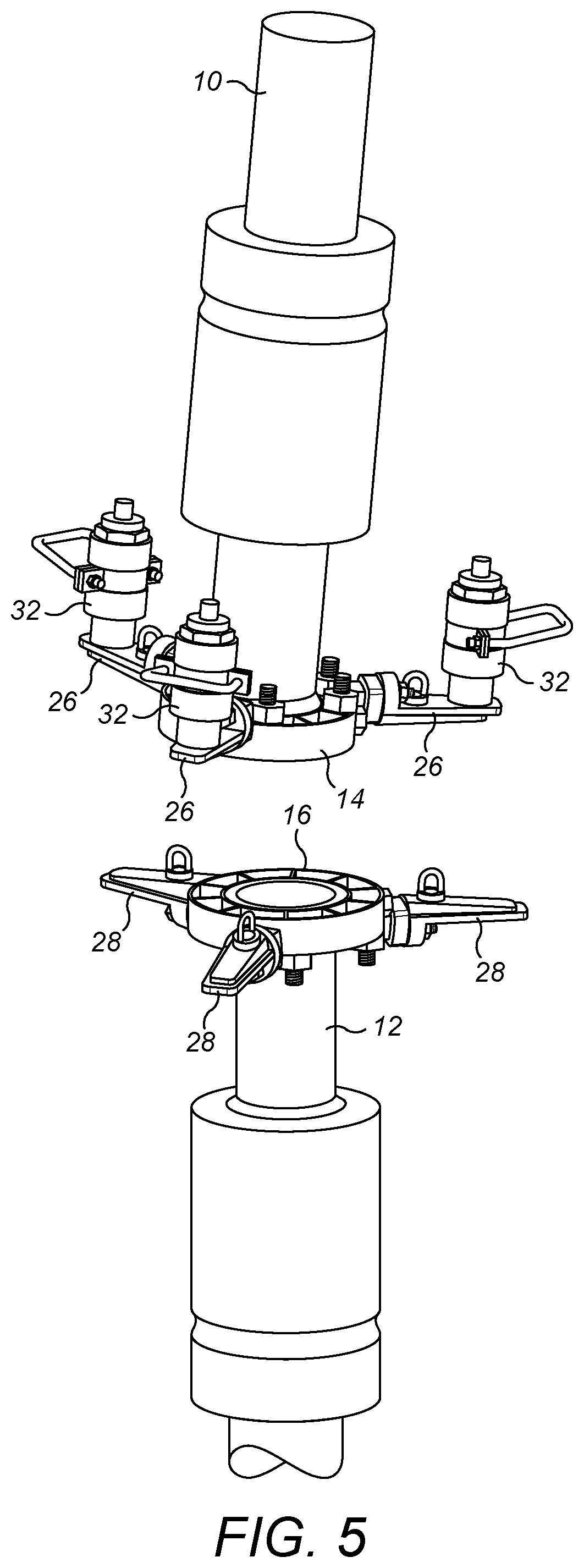Assembling flanged couplings
a technology of flanged couplings and couplings, which is applied in the direction of flanged joints, pipe laying and repair, mechanical equipment, etc., can solve the problems of shortening the ‘weather window, difficult and long operation of aligning and pulling together two flanges for couplings, and magnifying the difficulty of performing these operations, so as to facilitate remote intervention, facilitate operation, and facilitate handling
- Summary
- Abstract
- Description
- Claims
- Application Information
AI Technical Summary
Benefits of technology
Problems solved by technology
Method used
Image
Examples
Embodiment Construction
[0057]FIGS. 1 to 4 are simplified schematic drawings that show the principle of the invention. Conversely, FIGS. 5 to 13, which will be described later, are detailed drawings of a preferred embodiment of the invention that embodies the principle shown in FIGS. 1 to 4.
[0058]FIG. 1 shows upper and lower pipes 10, 12, spaced apart and mutually misaligned but facing each other end-to-end. In this example, the pipes 10, 12 are subsea pipes located underwater although they could instead be above the surface, for example on an installation vessel, or on land.
[0059]It will be appreciated that references to ‘upper’ and ‘lower’ in this description are merely for convenience of illustration and explanation. In reality, pipes that require end-to-end coupling may be in a variety of orientations other than approximately vertical, upright orientation shown in the example here.
[0060]Each pipe 10, 12 terminates in a respective flange 14, 16 whereby the pipes 10, 12 can be coupled together for fluid ...
PUM
 Login to View More
Login to View More Abstract
Description
Claims
Application Information
 Login to View More
Login to View More - R&D
- Intellectual Property
- Life Sciences
- Materials
- Tech Scout
- Unparalleled Data Quality
- Higher Quality Content
- 60% Fewer Hallucinations
Browse by: Latest US Patents, China's latest patents, Technical Efficacy Thesaurus, Application Domain, Technology Topic, Popular Technical Reports.
© 2025 PatSnap. All rights reserved.Legal|Privacy policy|Modern Slavery Act Transparency Statement|Sitemap|About US| Contact US: help@patsnap.com



